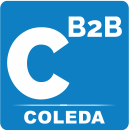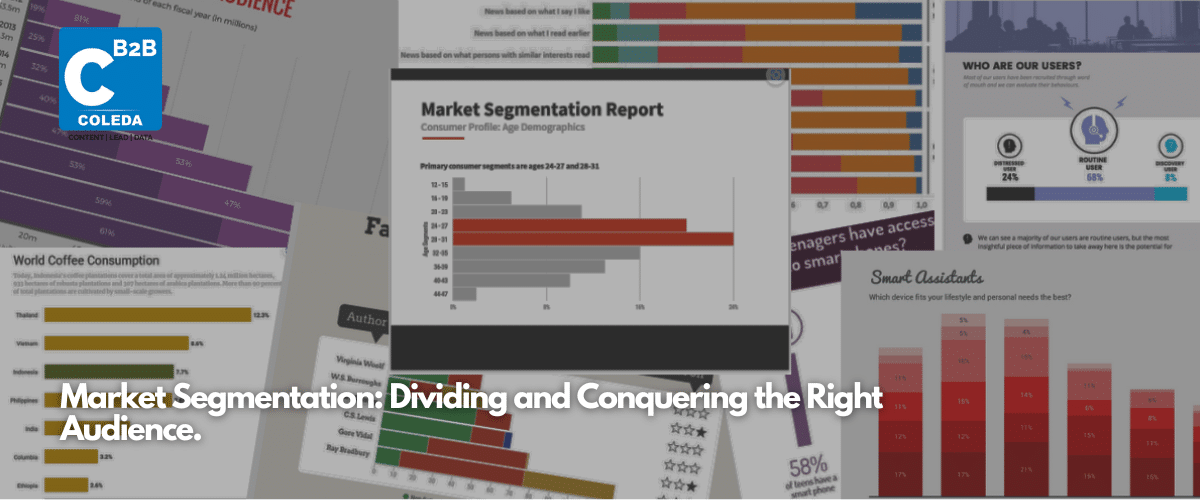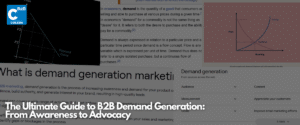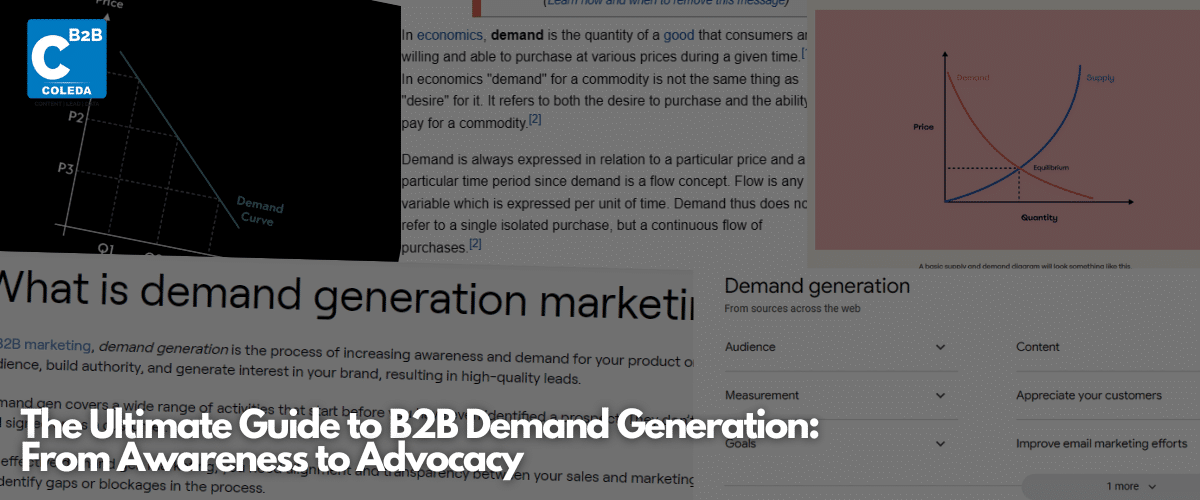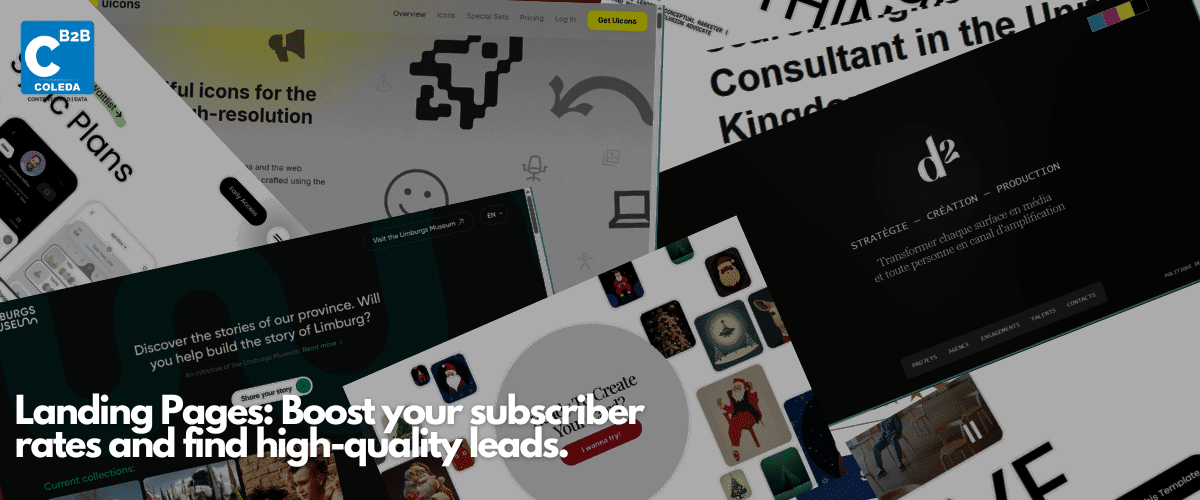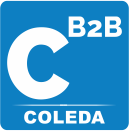
Marketing to a niche audience has become increasingly important. B2B buyers are now facing unique challenges in their industries. Luckily enough, many businesses rise to the occasion and create products/services that can help these buyers find a solution.
The problem is that these businesses can’t reach or resonate with their relevant targets. Their lead generation efforts seemingly go to waste as 50% of the qualified leads are not sales-ready.
Even after finding the best TOFU and MOFU campaign practices and strategies, expectations don’t match the efforts. That is when creating segments becomes necessary for the marketing teams.
By creating a niche, marketers can relay an effective message that seems personalized and drives brand trust. And building trust is vital in an industry where solutions are oversaturated.
After all, B2B buyers are now paying for the customer experience a business provides. And market segmentation is one of the best ways to reach a relevant audience and hold their interest.
Market segmentation (or lead segmentation) is crucial for businesses that want their message to reach the relevant audience.
What is Market Segmentation? And why should marketers segment their users/buyers and audience?

Focus is essential for long-term success. It’s honing into a logical puzzle and coming up with an effective solution. Market segmentation is creating a group of potential buyers with similar characteristics and focusing marketing efforts specific to their grouping characteristic.
The technical definition of a market segment is an audience grouped by shared elements. These elements or characteristics define the approximate behavior of the group or segment.
Market segmentation is creating a niche audience that follows a similar journey and applying content marketing efforts to them. Marketing is over-saturated with similar messages, and B2B buyers are tired of it. A flood of choices awaits them in the market.
Segmentation ensures that the leads and potential buyers’ group into a niche. And creating a niche is crucial in a saturated market. A segmented approach helps by enabling: –
- Creation of content that speaks to an audience
- Analyzing behavior in manageable chunks
- Effective automated strategies based on conditional approaches ensure the message reaches the right audience at the right time.
Here’s an excellent resource for niche marketing!
Let’s dive into three statistics that would help deepen the understanding of why segmenting is crucial!
- 70% of niche websites successfully build a community around it.
- 65% of the audience trust niche content more because of their specialization.
- 50% of the niche website audience will recommend it to their network.
Even though niche marketing is not segmentation, segmentation helps create a niche market from a broad audience, helping marketers reach their desired audience with the right content and at the right time.
Identifying and creating market segments
One of the most successful companies on earth leveraged segmentation to diversify itself. When Microsoft began, it quickly realized that offices benefitted from their software, making work productive and handling data easier.
Tools like Excel which transformed how offices handled spreadsheets to PowerPoint presentations which revolutionized presenting ideas. Windows became an office staple — a must-have for all serious organizations.
But on December 10, 1993, Id Software released Doom for the MS-Dos to massive success. It was so popular that copies of Windows (MS-Dos) were being bought to play Doom.
Microsoft soon realized that gaming was profitable, and it was lucrative to enable gamers.
Microsoft became diverse in its approach and segmented its marketing into two groups: –
- Organizations who needed Office’s tools
- And gamers who were passionate about their hobby.
The rest is history. Microsoft has remained a mainstay in software, specializing in improving organizational productivity. It’s a dominating force in the multi-billion gaming market; their marketing efforts yield a gaming market share of 27.3% as of 2022. Making it the third-highest market share.
Similarly, B2B organizations can segment their buyers. How? By realizing the segments that still exist within their market.
This story illustrates two notable things that give us an understanding of how to create segments: –
- Identifying the buyer’s needs.
- Analyzing the behavior and buying patterns.
Market Segmentation enhances lead nurturing efforts. It helps B2B organizations streamline and create compelling content.
Lead Nurturing is essential for conversion of leads by sending relevant content at the right time to the suitable leads. Yet, a prevalent problem marketers face is finding the exact leads to nurture with the correct content. Segmentation resolves this part of the puzzle.
It isn’t just a tool to divide potential buyers for better understanding but to reach out to them in a way they want. Creating a segment is simple but not easy. It requires an immense awareness of the buyer and their behavior.
Creating Lifecycle segments
A fascinating way of creating segments is dividing them according to their lifecycle.
That is a way of saying: Segmenting leads/potential buyers in relation to their journey in your companies’ sales/marketing funnel.
Lifecycle segments are a logical way of grouping potential buyers and help apply conditional actions to each segment. It divides a broad audience into actionable segments by analyzing the buyer position in the funnel and assigning a behavioral value to it.
Example: A group of prospects who have downloaded the whitepaper but have not downloaded a demo after a given time.
And there is a group of prospects that have downloaded the whitepaper and have downloaded the demo.
Thirdly, there is another group who have downloaded the demo but have not reverted after an interval.
These three groups are in their lifecycles and need lead nurturing according to their unique journey. What lifecycle segments do is they open up doors for personalization.
Personalization of content through segmentation
Content marketing at each stage of the funnel is essential to grow a brand’s thought leadership and convey a consistent tone of voice., helping lead nurturing and brand perception.
Marketing automation tools like HubSpot, Salesforce, and Zoho are great tools for creating segments and sending automated messages to potential buyers at certain intervals based on their lifecycle. Automation helps the propagation of content. Combining segmentation and automation is transformative for personalized campaigns.
Through conditional actions, marketers can choose when and what to send their potential buyers. And these conditional actions are only possible through market segmentation. The creation of content for each stage of the funnel is a challenge for B2B marketers. It is perceived as a challenge because every stage requires personalized nurturing.
Marketers are now competing to provide a comprehensive and seamless customer experience at every touchpoint. Market segmentation helps marketers understand the type of content to use to nurture the potential buyer, increasing the chances of conversion.
Segmentation streamlines content creation
A compelling message speaks to the audience by relating with them. Empathy creates a connection; expertise sells the idea. Both are necessary for an organization’s marketing growth.
But how does a marketer craft a compelling message? By understanding the potential buyer’s perspective and behavior. Content creation is challenging. But it doesn’t have to be. Lead segmentation lets marketers create a pipeline of content that will speak to an audience at every stage of the funnel.
The thing is, the funnel has evolved and is not a funnel anymore. TOFU, MOFU, and BOFU have blurred because the buyer’s journey has evolved. They are well-researched and informed.
But they have faced an overwhelming choice like never before. By segmenting the audience, a business can establish itself as a differentiator. In a market sold by features, segmenting helps create a benefit-driven model.
Every offer/service/product has its unique audience. The tools a business creates to solve problems will have a niche that can be tapped. And market segmentation is a way to find a niche audience.
Coleda believes in the search for high-quality leads. Segmentation is one of the best ways to qualify, nurture, and generate high-quality leads. It allows marketers to understand their audience at a granular level.
Marketers who segment and use market segmentation to reach their audience will reap the benefits of a competitive market that demands personalization at every touchpoint, building brand loyalty and cementing themselves as experts in their field.
